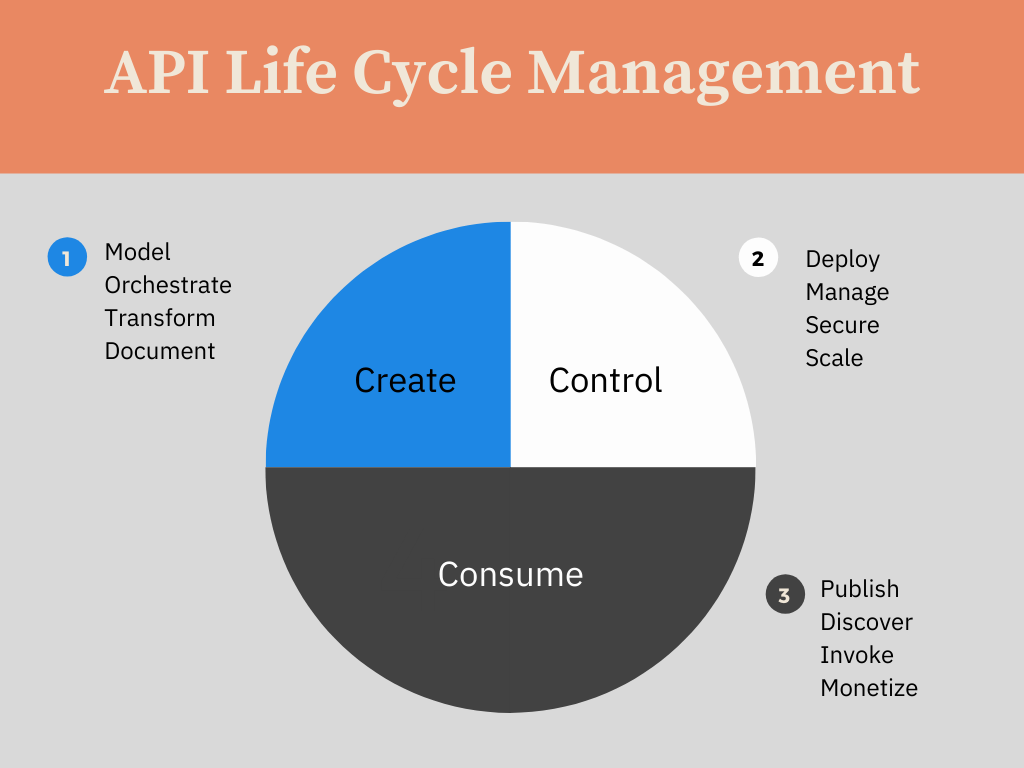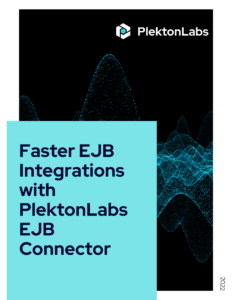Thanks to the far-flung reach of digital transformation, APIs are multiplying at a massive rate. Everyone wants a piece of the integration and the microservices offered by APIs are great for making operations smooth, quick, and agile.
But this increase in APIs means that businesses struggle to produce and manage them. How can organizations cope with the huge demand for API products?
The answer is simple. By managing the various stages in the life cycle of an API, from its conception to retirement. We’ve already looked at the stages of an API product’s lifecycle; and here we are going to look at these stages from a management perspective.
To handle the exponentially growing demand for APIs, businesses have to:
1. Create APIs quickly
2. Control them by managing a registry of products and imposing necessary security measures
3. Consume them directly or through third-party developers
This kind of approach gives us a rounded assessment of how to manage the various stages in the life of an API.

What Happens During the Creation Stage?
The following processes take place when creating an API:
a) Model: This refers to the process of specifying the data needed for your API endpoints. For instance, if you have a database containing the data you need for your API, expose the data model, and define your API format using connectors.
b) Orchestrate: This stage combines and standardizes data from different sources.
c) Transform: Convert old-fashioned formats to modern, more consumable formats. There are still many internal SOAP Web Services (XML) that have to be exposed to REST APIs (JSON) for easier consumption when it comes to linking the internal systems, such as the ESB.
d) Document: This automatically generates docs and code-snippets for API operations. Documenting APIs is vital for developers as it allows them to deploy them easily.
What Happens During the Control Stage?
When controlling an API product these developments take place or are applied:
a) Deploy: This deploys APIs within an instant to the target environment with minimal setup effort.
The time between code delivery and deployment must be as brief as possible. Certain tools speed up the process with Continuous Integration and Continuous Delivery. You will need something that integrates seamlessly with your DevOps strategy
b) Manage: This will manage access to the API and protect the quality of service by rate-limiting.
The more APIs you have, the harder it is to manage them all. This is where you will need an API Catalog you can look through easily. You can also manage the publication state of your various APIs (unpublished/published/ retired) and their versioning.
c) Secure: To keep your products secure, you must create and implement enterprise policies for safety and firewalling APIs. As APIs are the gateway to the other systems, securing them is crucial. You need an API Management solution that provides excellent API security.
d) Scale: This involves automatically scaling the API up or down to run your apps on the server-side. Web traffic is unpredictable and tends to fluctuate.
Because of this, you need an infrastructure that adjusts automatically with the traffic. This removes the possibility of errors and time lapses as no human intervention is needed.
What Happens During the Consume Stage?
During the consumption of APIs, these processes occur:
a) Publish: The API is marketed and sold through a central API Catalog to private groups, partners, or the general public. APIs in the catalog can be published via an API Portal for proper marketing and access.
There are 3 kinds of APIs, and they need different settings for the API Portal:
-Private APIs – they are meant for just internal use
-Partner APIs – these are for the use of a certain group of partners
-Public APIs or Open APIs– the ones that can be used by everyone
b) Discover: This provides self-service access for developers to browse APIs, their features and functions, and documentation. The API Portal is supposed to offer self-service. Developers should be able to connect and experience smooth navigation with documentation at all times.
There should also be the option to get help if they support. There also has to be a feature that allows developers to test out the API first on a sort of trial basis.
c) Invoke: The process will implement API operations or out-of-the-box MBaaS services from a client app.
To use APIs, developers have to obtain an automatically generated form from the API developer portal and can then integrate those APIs into their code with the help of an API SDK for their preferred development language.
d) Monetize: This keeps note of the use and applies rate policy to drive API revenue.
API monetization can be a complex area. In many situations, APIs are offered for free as they represent a novel way of making business and marketing and the business value comes from greater outreach and new market share.
In a Nutshell
As you can see, each stage of the APIs life requires care and management. Developers need to keep an eye on the API product from its creation, when controlling and realizing the API, and its consumption. But this pays well in the end, as it makes sure the API does exactly what it was meant to do. It also reduces the chances of error and makes sure the API functions as smoothly as possible.




